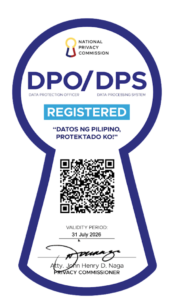Culture Matters: How Social Engagement Creates a Loyal Workforce

Revenue statistics, market share data, and customer happiness ratings measure a company’s achievement. However, behind the success of every advancing organization are motivated staff members with intense loyalty. A company’s business outcomes are mainly influenced by employee retention and engagement, while satisfaction is one of the most valuable methods for achieving these outcomes through workplace social engagement.
A culture of a strong workplace community that makes employees feel valued, connected, and engaged surpasses the traditional perks of a competitive salary and benefits. Companies prioritizing opportunities for interaction, teamwork, and staff belonging lead to better employee retention of high-level talent and workforce motivation. This article analyzes changes in employee loyalty caused by social engagement and provides practical ways to implement social engagement in workplaces.
Understanding Workplace Culture and Social Engagement
What is Workplace Culture?
Workplace culture encompasses an organization’s values, behaviors, and social norms. All aspects of leadership style, communication systems, workplace rules, and how employees connect with each other constitute workplace culture. Organizations with supportive workplace cultures produce motivated employees and stimulate trust and contented workers, but toxic environments trigger staff resignations and deplete morale.
The Role of Social Engagement in Employee Loyalty
Workplace social environments combine relationships, interactions, and community connections that employees must experience. Team collaboration and open communication form the basis of social engagement, which adds recognition and social opportunities outside work duties. Workplace connections between staff members and organization values alignment make employees more devoted to their company while improving workplace performance and behavioral contributions.
The Connection Between Social Engagement and Employee Retention
Why Employee Loyalty Matters
Replacing an employee can cost up to 33% of their annual salary, making turnover a significant financial burden. Employing and teaching new staff members needs substantial resources, while employee replacements interrupt work efficiency. A loyal workforce provides companies with maintenance of stability and continuity through deep commitment to meet goals.
The Psychological Impact of Social Connections at Work
Being a social species runs in our DNA, so psychological attachment to social groups forms our core requirement for existence. Establishing friendships within the work environment decreases work-related stress and gives employees higher satisfaction and better mental health. Workers in a supportive workplace environment build trust and collaboration, thus leading to better engagement and productivity levels.
How Socially Engaged Employees Perform Better
The employees who maintain active involvement with their company demonstrate superior working effectiveness while typically remaining with the organization longer. The State of the Global Workplace Report by Gallup reveals that when employees become highly engaged at work, they produce 21% more productivity than those who remain disengaged. Organizational success depends on employee teamwork, communication, and knowledge dissemination, which social engagement creates.
Additionally, fostering social engagement helps employees develop key interpersonal skills, which is why soft skills matter in the workplace. Communication, emotional intelligence, and adaptability are crucial in navigating workplace relationships and building strong professional networks.
Key Elements of a Socially Engaged Workplace Culture
Open Communication and Transparency
Work environments that enable free communication between co-workers help staff members articulate their thoughts and worries and participate in collaborative partnerships. Active leadership through listening and honest feedback creation generates workplace trust along with inclusive environments.
Recognition and Appreciation
Workers who experience valuing treatment and acknowledgment receive improvements in their commitment and engagement at work. Ordinary displays of acknowledgment, including employee-of-the-month designations and public recognition, combined with personalized expressions of approval, create substantial employee moral elevation.
Team Collaboration and Relationship Building
The workplace bonds grow stronger when employees join forces to complete projects, join team discussions, and conduct team activities together. The stronger relationships between workers create deeper emotional commitments towards their workplace.
Work-Life Balance and Employee Well-Being
Organizations focusing on work-life balance show genuine concern for employee welfare after their obligations. Implementing flexible schedules with wellness programs and employee mental health assistance leads organizations to attain healthier workforces that remain highly engaged.
The Role of Leadership in Fostering Social Engagement
Leading by Example: Building a People-First Culture
Organizational leadership is essential in designing workplace culture and employee engagement levels. Leadership should focus first on employees through sincere concern about employee welfare to develop trust-based collaboration. Leaders who join team activities while giving out public appreciation through authentic communication establish the standard operating behavior across the organization.
Encouraging Employee Feedback and Participation
The workplace performance of a socially engaged staff depends on employees who feel important and listened to. Organizations must implement feedback systems, including employee questionnaires, suggestion portals, and open discussion sessions to boost worker engagement. Employee involvement, which results in fundamental organizational transformations, leads employees to develop ownership and commitment toward the company.
Organizing Social and Team-Building Activities
The regular combination of employee social events, team-based outings, and corporate retreats helps employees create better relationships with each other. The organization’s cultural events, including team lunches, charity initiatives, and virtual game nights for distant employees, develop workplace community bonds.
The Impact of Social Engagement on Productivity and Innovation
How Social Engagement Drives Creativity
The social engagement of employees results in higher workplace innovation levels. Employees who freely express their ideas without concern of judgment participate in building a creative work environment. Organizations that support collaborative workspaces enable employees to jointly brainstorm while sharing problems and knowledge so they produce better innovations.
The Link Between Workplace Happiness and Performance
Happy employees are productive employees. Research indicates that business entities with satisfied employees perform better than their rivals by 20%. Job engagement, motivation, and the willingness to perform additional tasks directly result from workplace happiness.
Employee Engagement as a Competitive Advantage
Socially engaged organizations secure better market positions that help them draw and maintain excellent staff members. Strong workplace cultures promote lower employee absences and superior customer satisfaction, contributing to greater organizational profitability.
Strategies to Improve Social Engagement in Your Workplace
Implementing Mentorship and Peer Support Programs
Mentorship programs provide employees with guidance, career development opportunities, and a stronger connection to the company. Peer support groups further enhance social engagement by creating a network of trust and collaboration.
Using Technology to Enhance Social Connectivity
Companies must use technology to sustain social connectivity when employees move between remote and hybrid work methods. Remote workers can interact better with their fellow in-office employees through virtual team-building activities, virtual collaboration tools, and digital platforms for employee engagement.
Creating a Culture of Inclusion and Diversity
A workplace that values social engagement maintains diversity and welcomes members from all backgrounds. Managing multicultural teams requires an inclusive approach that respects and integrates diverse cultural backgrounds into the workplace. A workplace that honors diverse viewpoints, cultural diversity, and equal opportunity benefits creates strong employee connections.
Measuring the Success of Social Engagement Initiatives
Key Metrics to Track Employee Engagement
Organizations must monitor three main employee engagement metrics: retention figures, participation numbers in social programs, and survey feedback collection.
Employee Surveys and Feedback Mechanisms
Survey sessions and employee satisfaction surveys provided regularly enable teams to measure engagement standards while highlighting necessary improvement points.
Continuous Improvement and Adaptation
A workplace culture that has been developed into a strong foundation requires sustained time and effort. A business must listen to staff opinions to develop and improve their approach to workplace engagement as workforce requirements transform.
Conclusion
Social engagement within workplace culture determines how much employees remain loyal while maintaining productivity and job satisfaction. Organizations that develop authentic employee relations, support work-life harmony, and unite their workers create a space where staff perform at their best. Organizations that evolve toward the future must continue implementing social engagement strategies because they produce reliable employee engagement that yields highly performing workers.
Discover more about outsourcing and
how you can maximize it for your
business success!
Get a copy of our E-book: Guide to Outsourcing.




